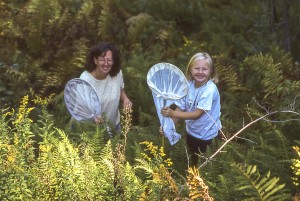 Each year eButterfly keeps growing thanks to the dedication of many butterfly watchers and professional lepidopterists. In 2017 alone, 475 species were reported to eButterfly represented by nearly 12,000 checklists comprising almost 50,000 butterfly records and over 21,000 photographs. We now have recorded 741 butterfly species at over 35,000 locations across North America by nearly 6,000 people! We hear from many users who tell us how eButterfly has helped them learn more about butterflies and has made their butterflying more fun and have more purpose. We also hear from many great butterfly watchers who say that they want to submit to eButterfly more often or that they “keep meaning to get started” but have yet to “take the plunge.” Together, let’s make 2018 a big eButterfly year!
Each year eButterfly keeps growing thanks to the dedication of many butterfly watchers and professional lepidopterists. In 2017 alone, 475 species were reported to eButterfly represented by nearly 12,000 checklists comprising almost 50,000 butterfly records and over 21,000 photographs. We now have recorded 741 butterfly species at over 35,000 locations across North America by nearly 6,000 people! We hear from many users who tell us how eButterfly has helped them learn more about butterflies and has made their butterflying more fun and have more purpose. We also hear from many great butterfly watchers who say that they want to submit to eButterfly more often or that they “keep meaning to get started” but have yet to “take the plunge.” Together, let’s make 2018 a big eButterfly year!
Give it a try today, for yourself, for watchers everywhere, and for the butterflies we all care about. Every butterfly observation has value. Whether it is a rare species from a remote northern bog, or an observation of a Monarch in a backyard — every sighting you contribute is helpful. The world is a big place, and to understand what is truly happening with butterfly populations requires contributions from as many people and places as possible.
Although every sighting is absolutely useful, we would also like to make sure that more observers add complete checklists in 2018. Last year, just 20% of the checklists submitted were considered complete checklists, those that include all species observed, AND have information about distance or area covered as well as total time spent observing butterflies. These are most valuable for research and conservation as they allow us to use the strongest statistical approaches when analyzing the data.
As a last step for every eButterfly checklist observers enter is statement with a yes or no answer — I am submitting a checklist of all butterflies I observed at this location, date and time. It’s located at the bottom right of step 3 when you enter your checklist. Though simple in concept, the power of reporting all species should not be underestimated. By submitting a complete checklist of the butterflies you saw to the best of your ability, you are telling us not only about the butterflies you found, but you’re also telling us that you did NOT observe a suite of other potential species. By submitting a complete checklist of butterflies we can learn more about where a species occurs with regularity, but equally important we can begin to say with certainty where it does not occur. This allows us to map entire species’ ranges with more accuracy. When you submit a complete checklist to eButterfly you’re gathering data not only for the species you observed, you are also gathering important “negative data” on a suite of other butterflies.
Make 2018 Your Big eButterfly Year
- Enter sightings in eButterfly. If you aren’t sure how to get started, we’ve got you covered— learn more here on our help pages.
- Already an eButterflier? Why not introduce someone else to eButterfly. If you already submit to eButterfly consistently, thank you! But please consider helping someone new get started. Surely you have a friend or butterfly watching acquaintance who could use a bit of help getting started with the eButterfly website, understanding how to collect and submit a complete checklist. If you are a part of a local email list or Facebook group, get those friends to use eButterfly too.
- Learn more about your local butterfly community. New users sometimes feel like their data aren’t “interesting” enough to submit. This simply is not true. eButterfly is intended for anyone and everyone. Having this information coming in from everywhere gives us the powerful ability to learn about butterflies at a location, or about a specific species across its entire range. This is only the tip of the iceberg for exploring the information that eButterfly has to offer.
- Enter your historic sightings. Longtime butterfly watchers sometimes tell us that they don’t participate because they could never get all their old records into the system. This shouldn’t be a barrier—the butterflies you are seeing today are valuable data points that are being lost with every day you delay. For those that do want to upload their older data, we can help you make that a reality if you contact us.